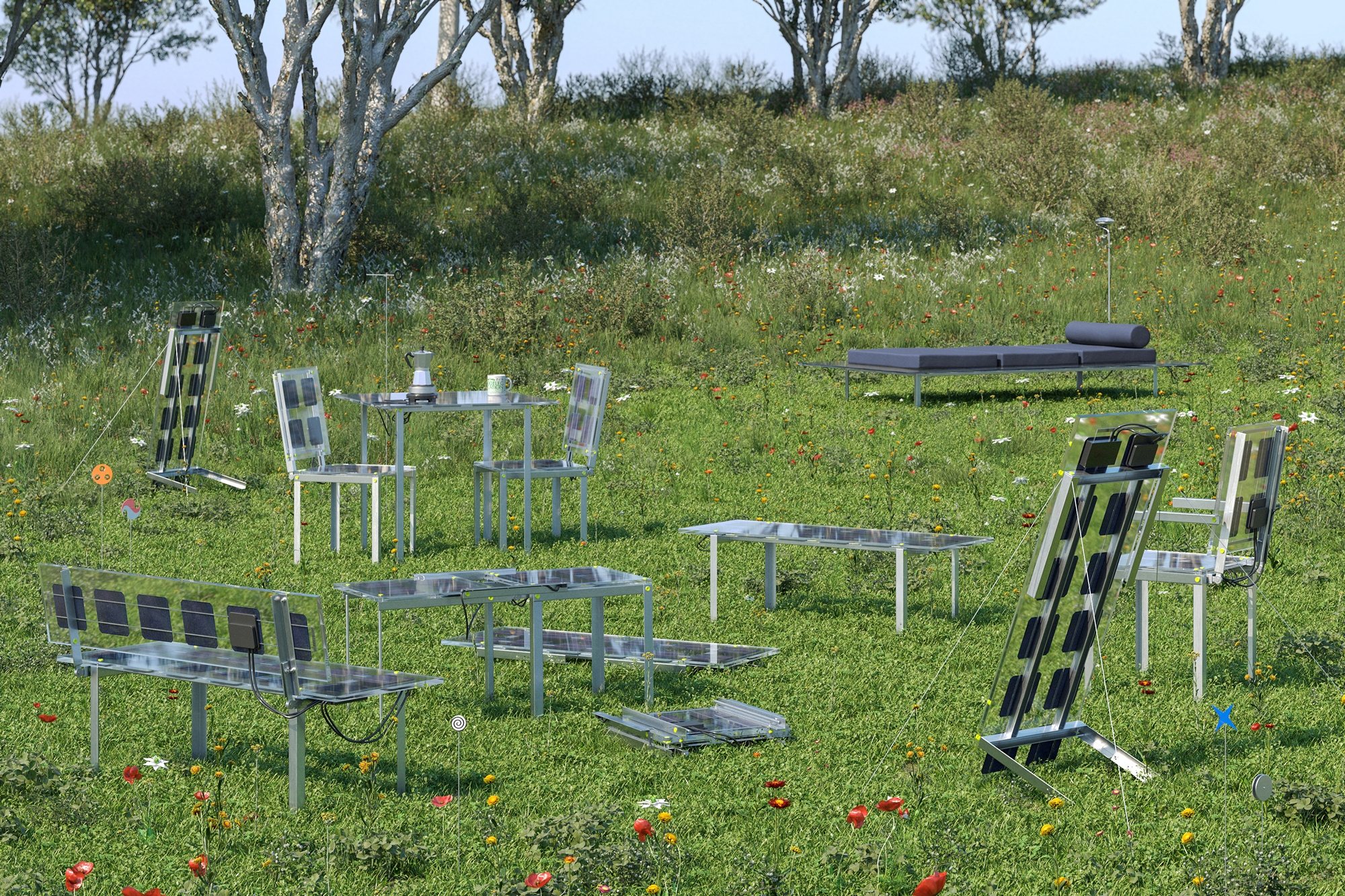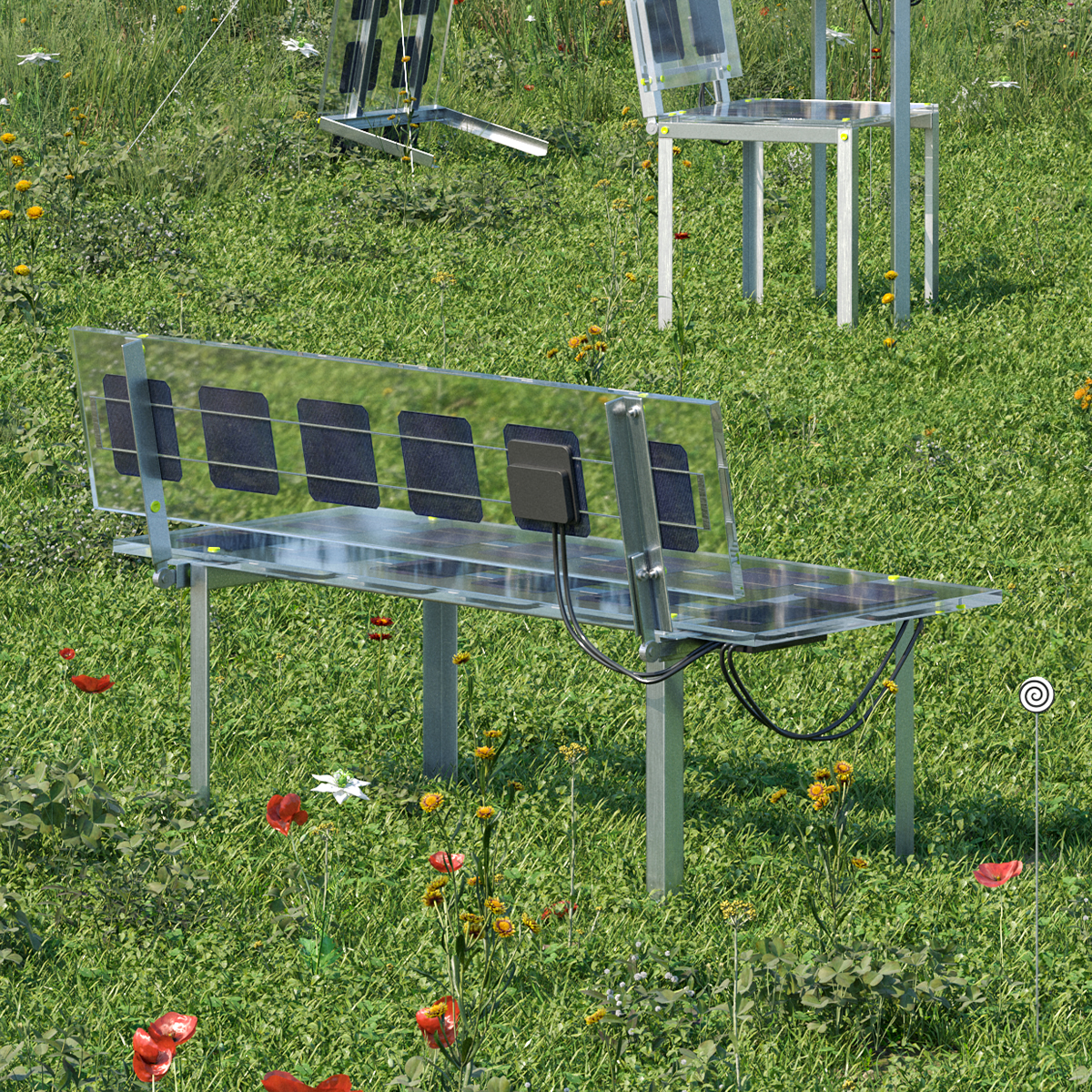Energy Objects: Solar Series
2023–
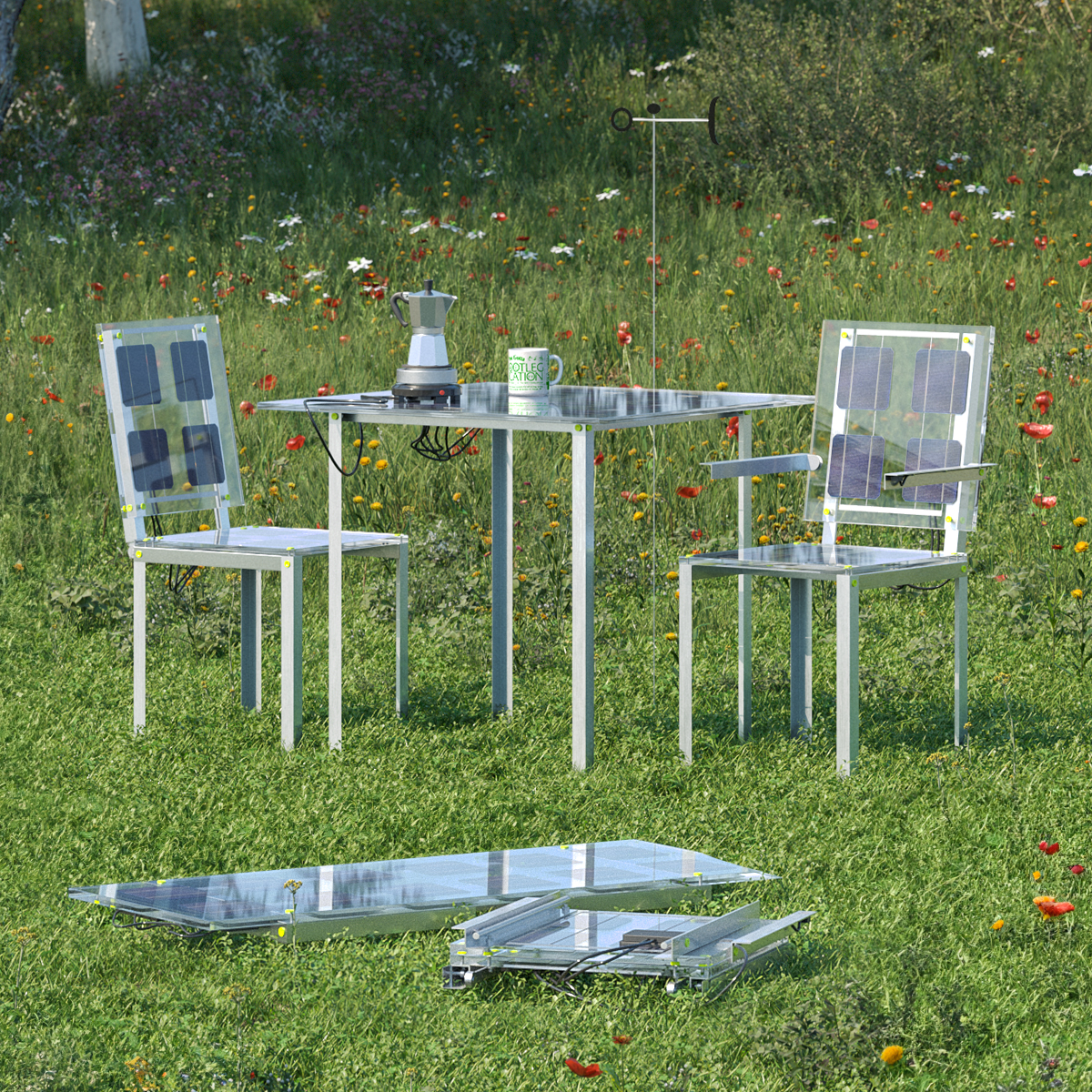

The future is electric, but Australia still has a heavy reliance on fossil fuels. The majority of our transport relies on oil imports, and 68% of our energy generation comes from coal and gas. As Saul Griffith states in his book ‘The Big Switch”, “Thermodynamics tells us that we can run the same country we do today using less than half the energy, just by electrifying all our machines”. As we look to transition to renewable energy by electrifying the transport, manufacturing, residential, commercial, agriculture and construction sectors we still need to scrutinise how and where we generate electricity.
Each chair, table, bench and daybed in the broader series can charge a phone, hotplate or light, demonstrating a viable form of standalone energy generation. Far from a solution, this set of furniture asks us to consider how we generate and consume energy in our everyday lives. The project draws on two principal influences — Charles and Ray Eames’, Solar Do-Nothing Machine, and Superstudio’s ‘Misura’ series.
Each chair, table, bench and daybed in the broader series can charge a phone, hotplate or light, demonstrating a viable form of standalone energy generation. Far from a solution, this set of furniture asks us to consider how we generate and consume energy in our everyday lives. The project draws on two principal influences — Charles and Ray Eames’, Solar Do-Nothing Machine, and Superstudio’s ‘Misura’ series.
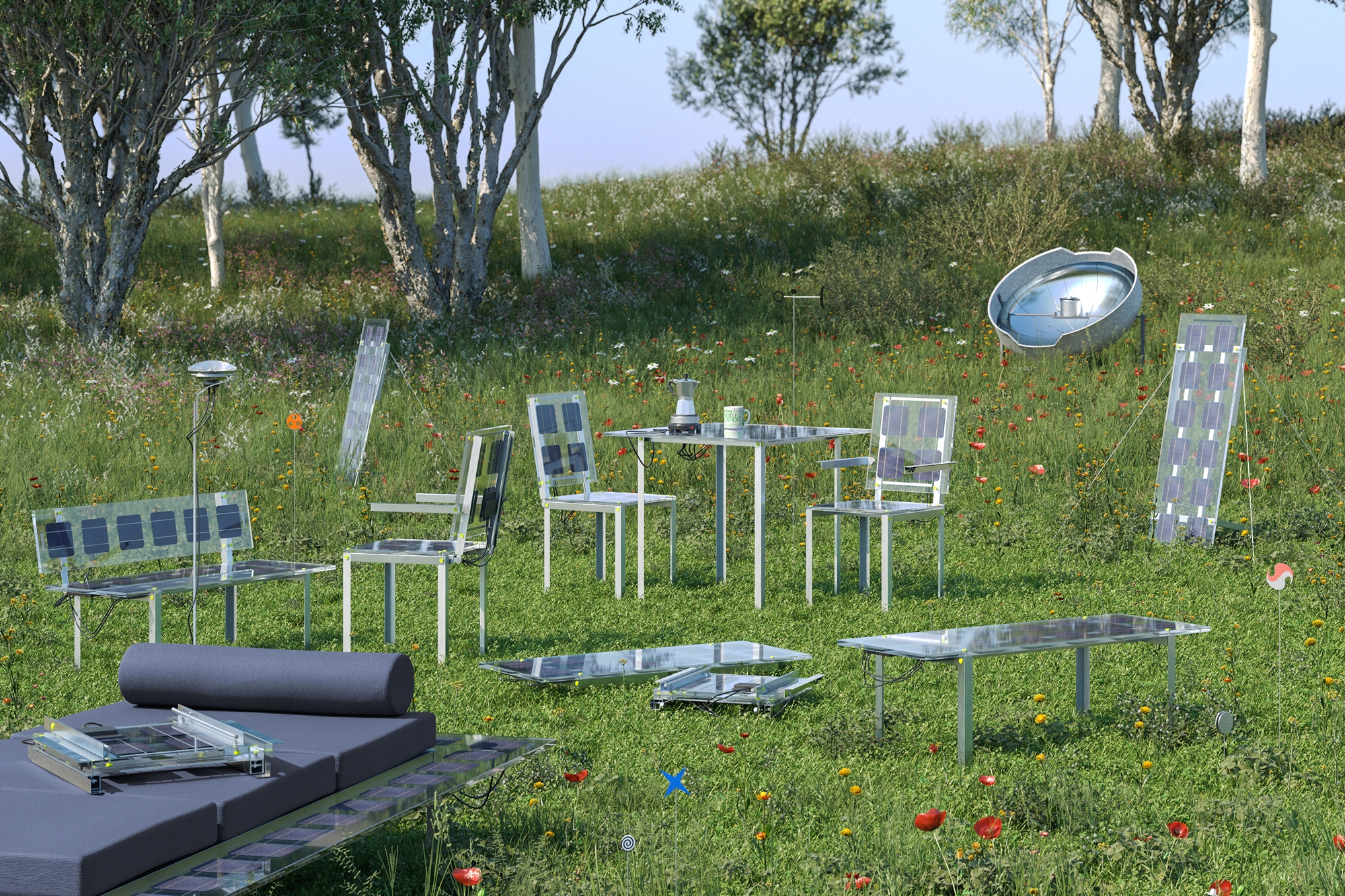
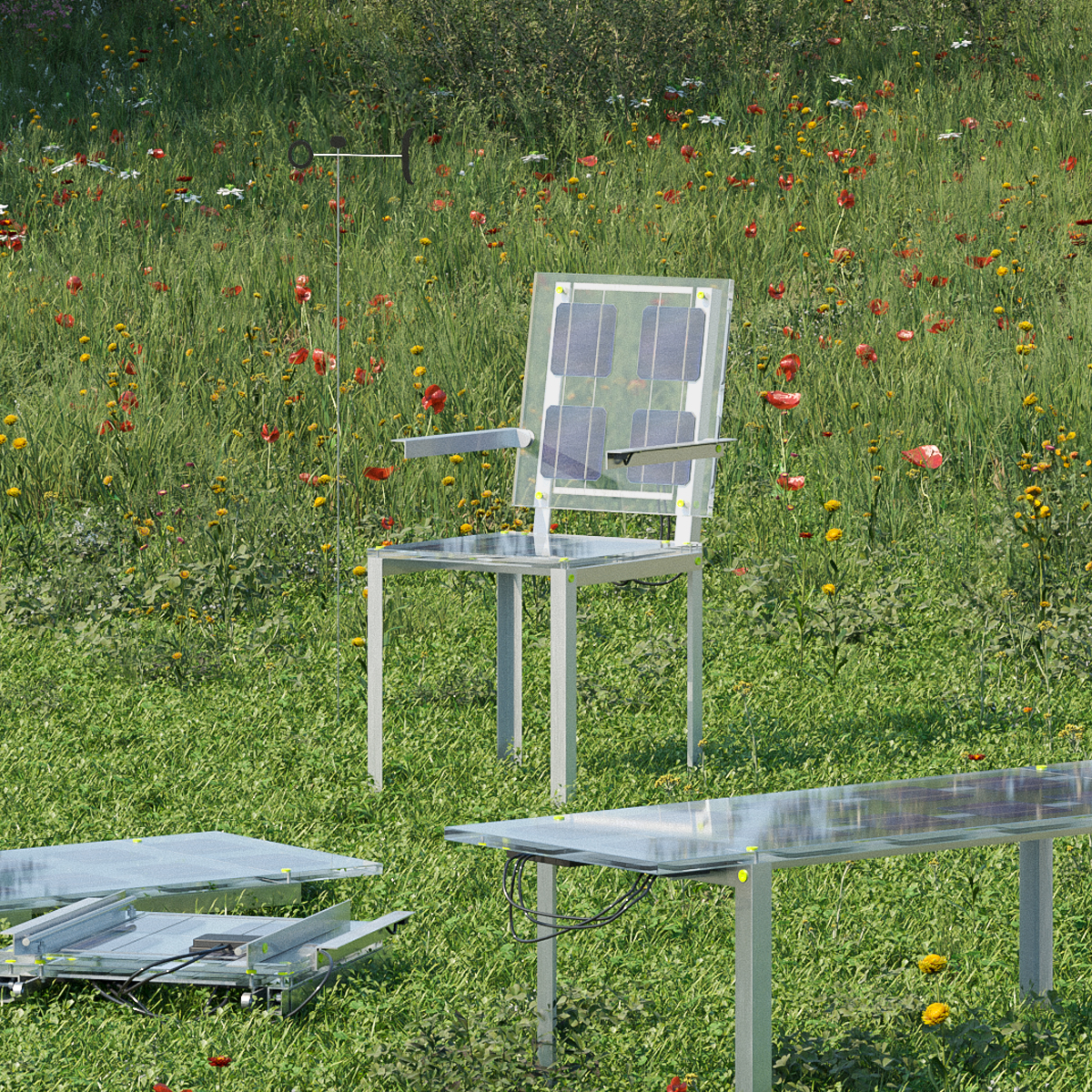


Designed in the early 1970s, Superstudio’s conceptual furniture series based on gridded histograms formed a broader social critique of design as merely an inducement to consume.
"In those years, it became very clear that to continue to design furniture, objects, and similar household decorations was no solution to [the] problems of living.”Here, the furniture is no longer a form of consumption but one of production with the ‘Histogram’ translated to a grid of solar cells.— Superstudio, 1968
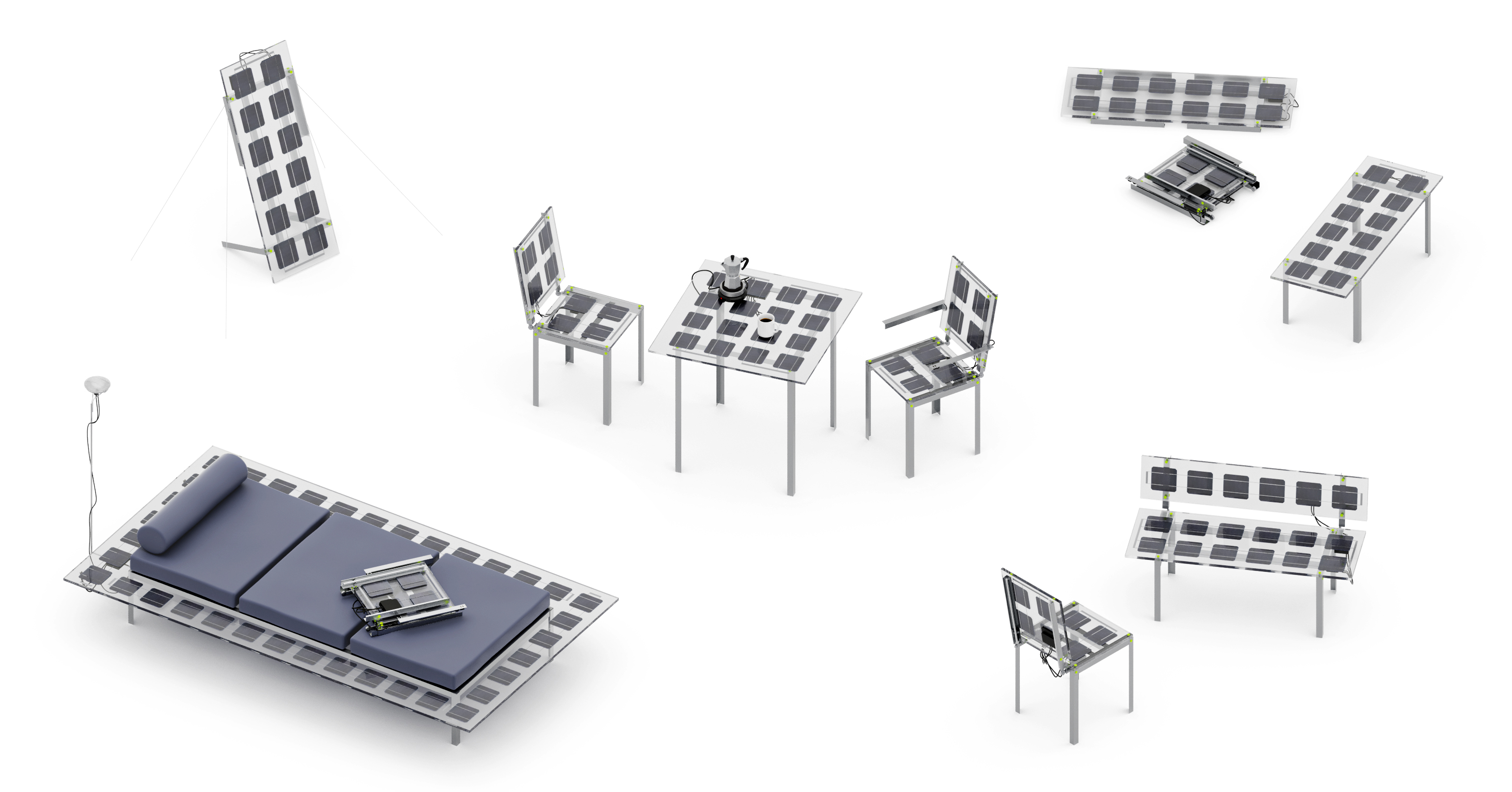


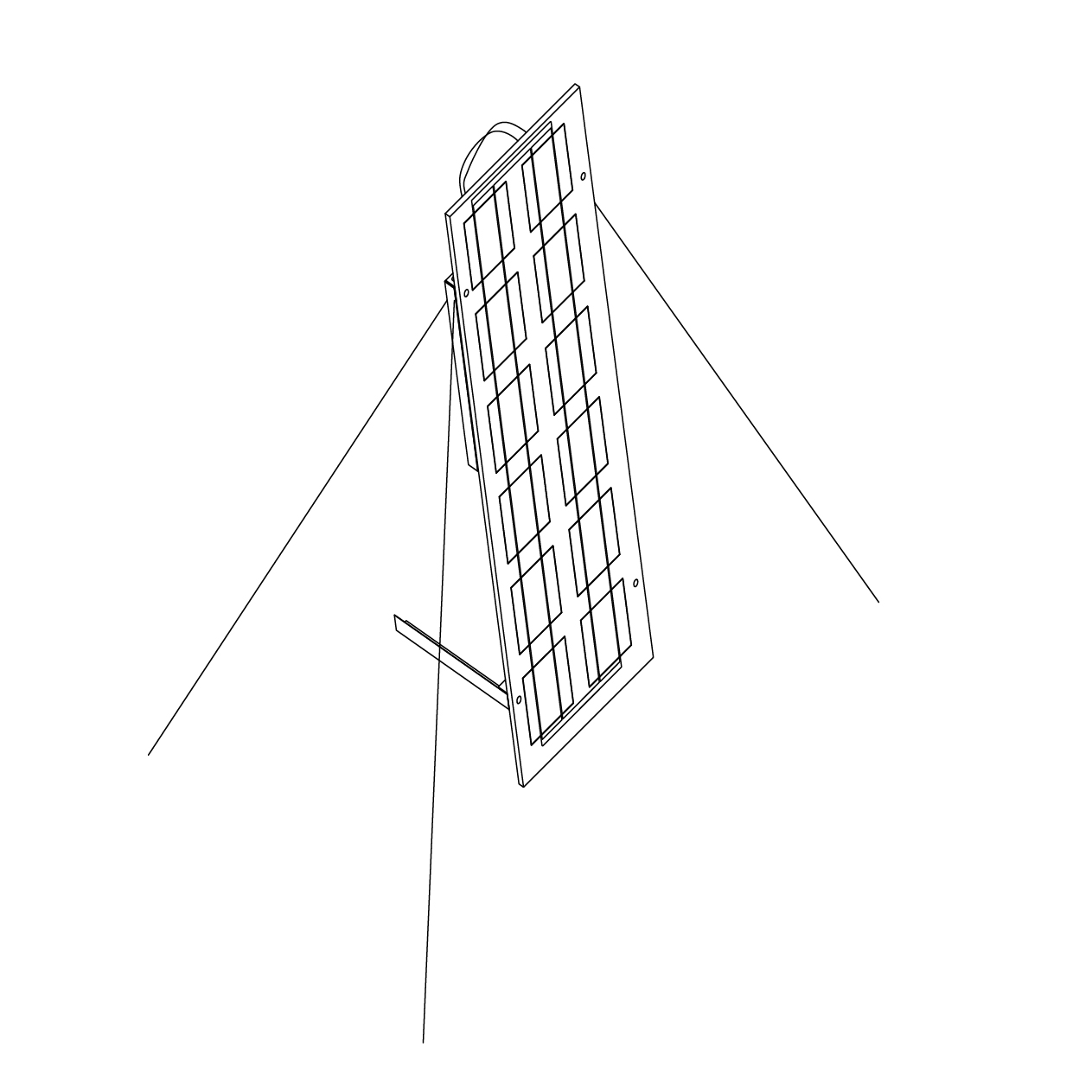

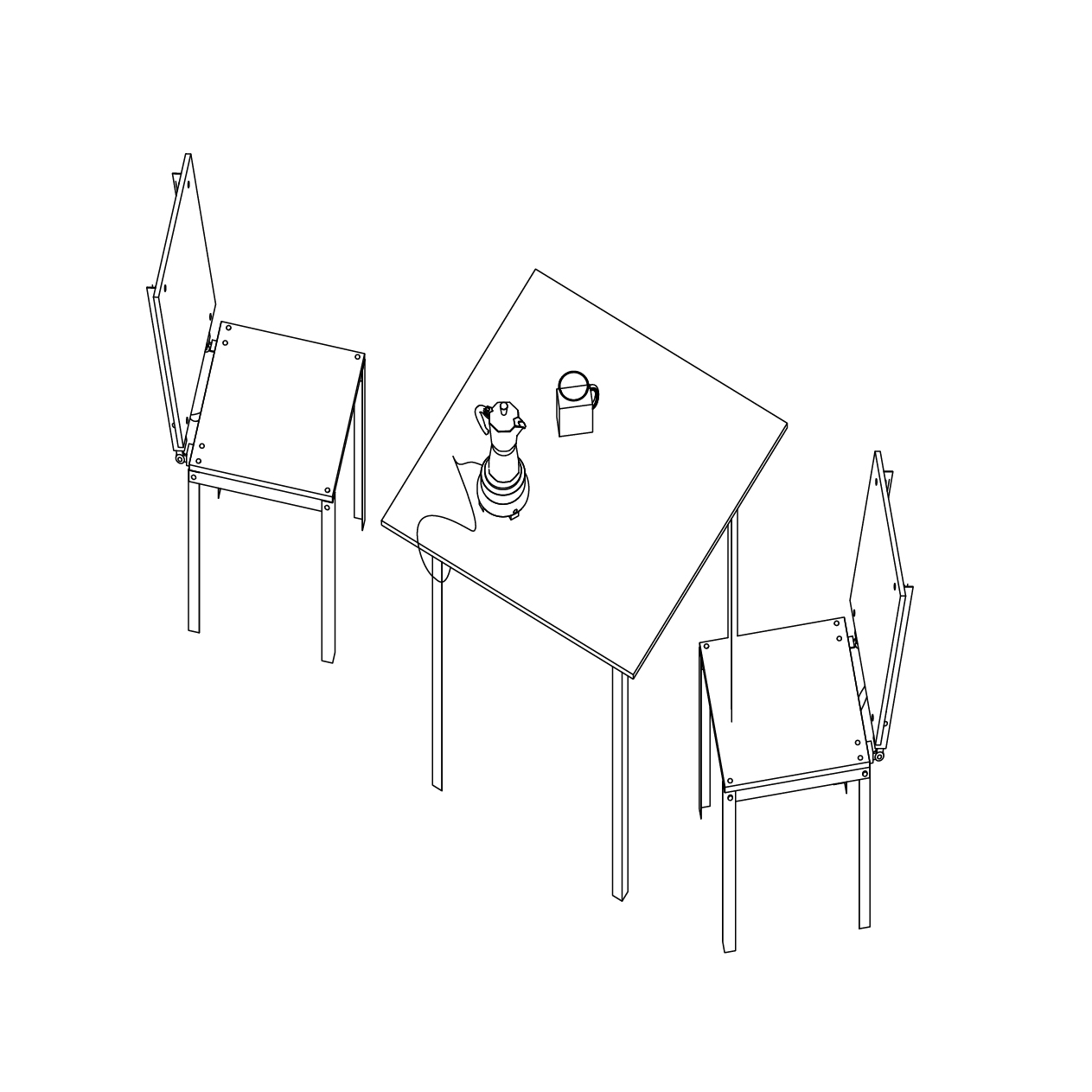
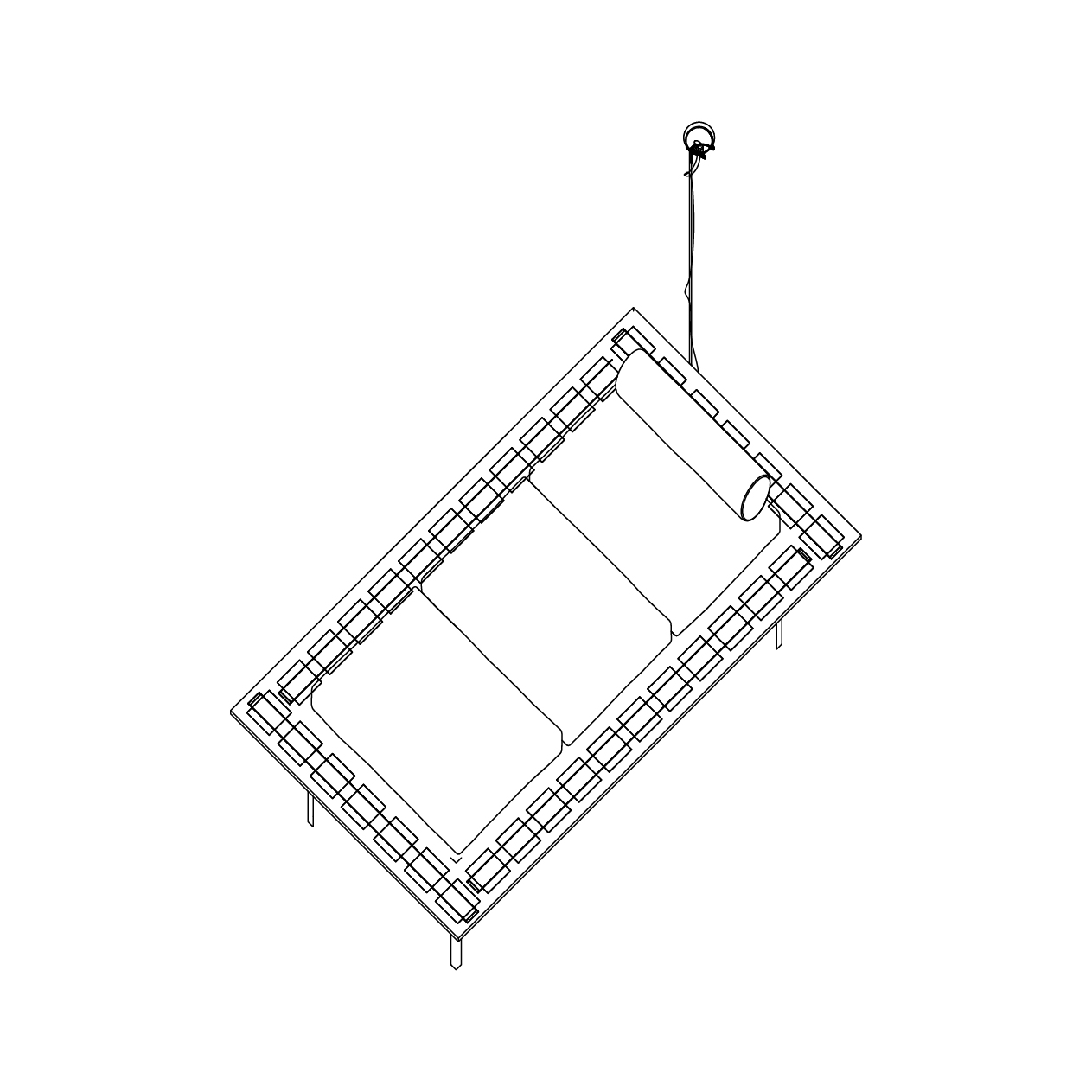
- Chair
- Bench
-
Bench in charging mode
- Bench with backrest
- Dining table with chairs
- Daybed
In 1957, the Eames Office was invited to participate in an advertising initiative for Aloca. For this Charles and Ray Eames created one of the first uses of solar electricity, a device which they called, The Solar Do-Nothing Machine. At the time no one understood the capabilities of this novel form of energy generation which prompted the need for a visual demonstration of the technology’s capability.
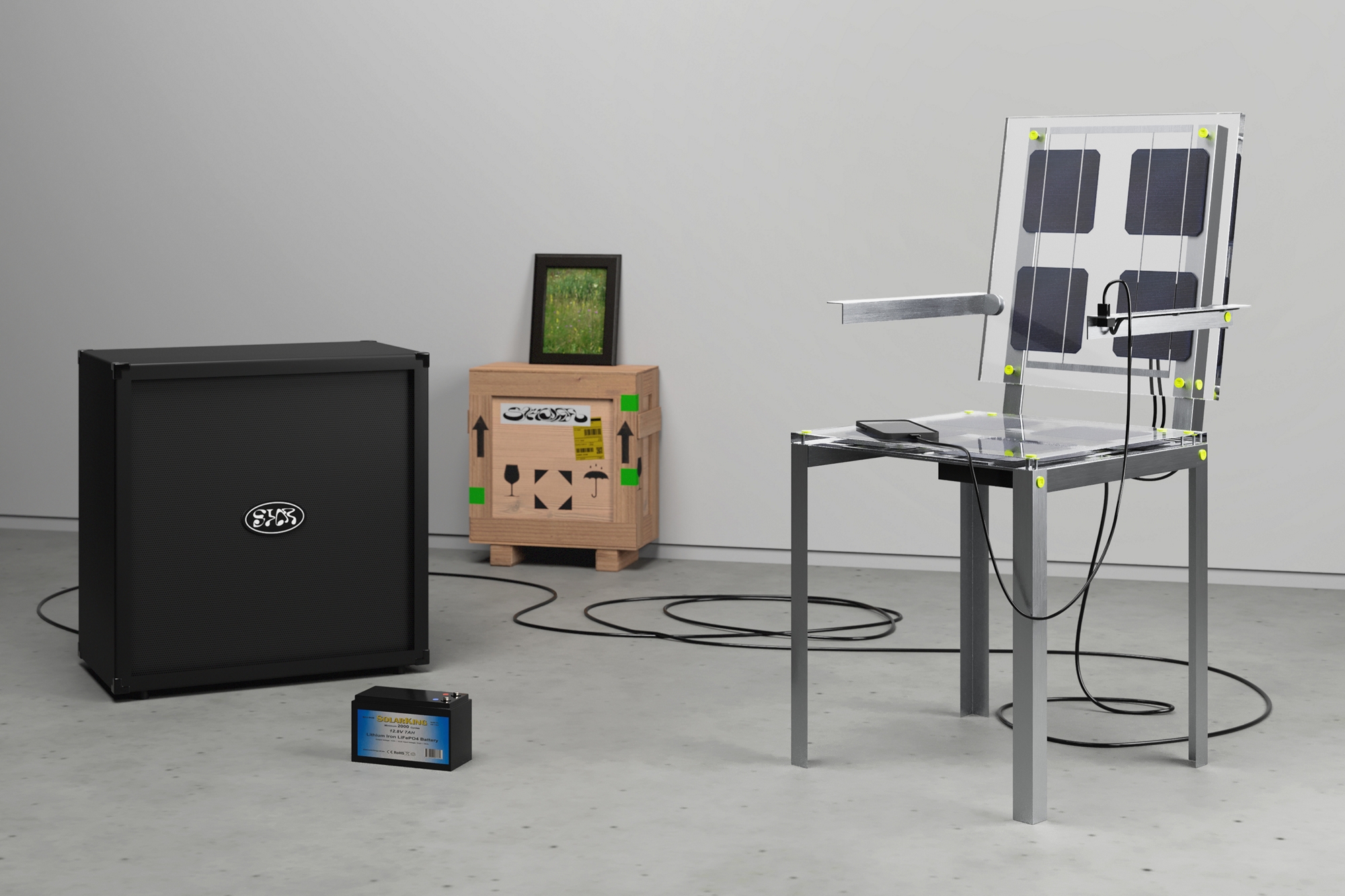
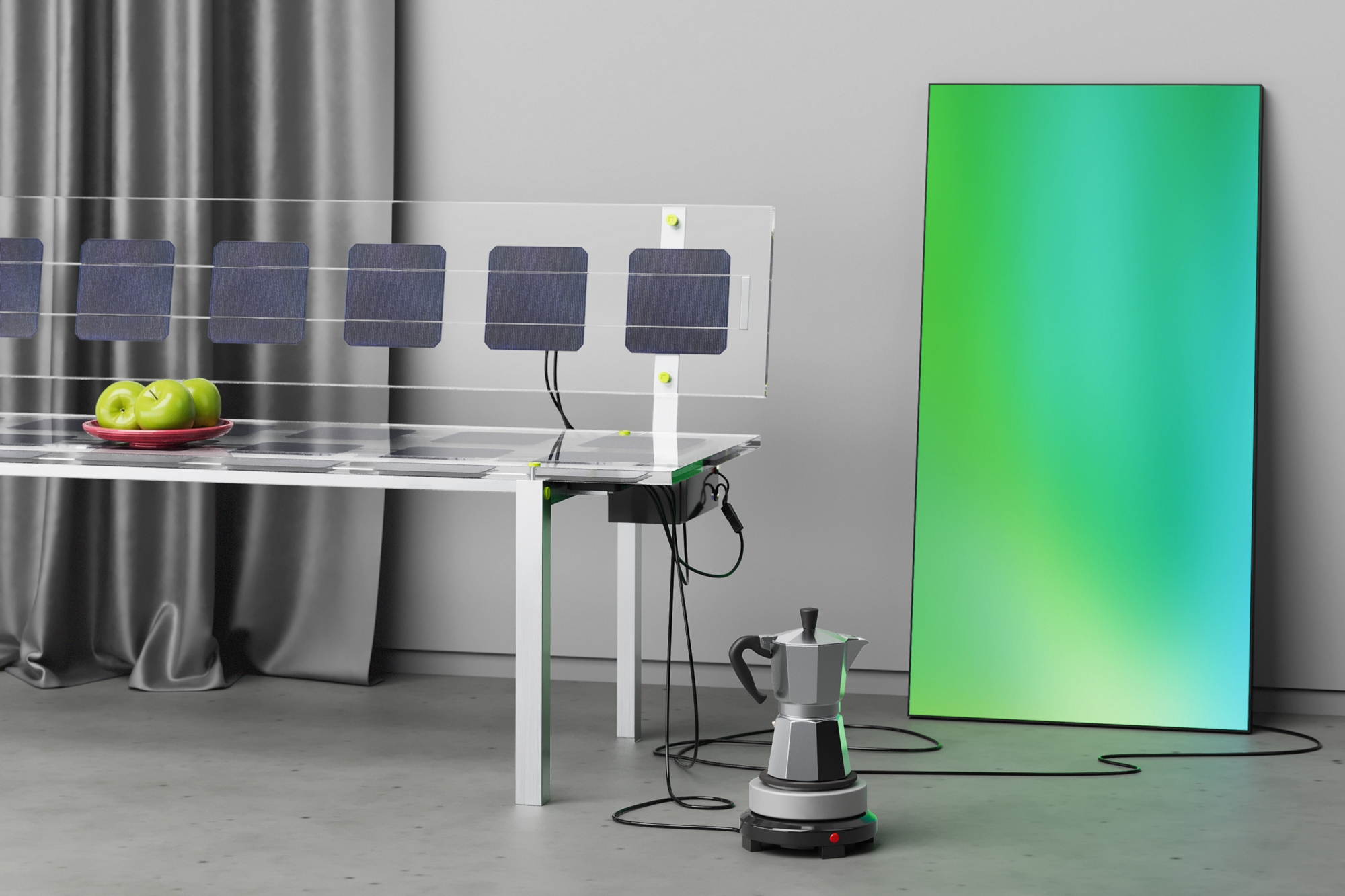
In contrast, our project recasts a set of functional objects as small-scale power generators, arguing for a distributed network of generation directly where energy is needed.
